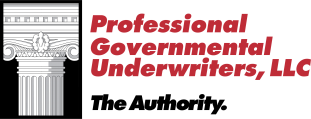Local Governments, Police Stations, and Hospitals Are Not Immune to Ransomware Attacks

Study into Earthquake Safety Reveals Possible Safety Issue at Charter Schools
October 28, 2019
Cyber Vulnerabilities in the Education System
November 11, 2019Local Governments, Police Stations, and Hospitals Are Not Immune to Ransomware Attacks
Earlier this year, the city of Baltimore sustained a massive ransomware attack, crypto-locking files and bringing damage to the city’s IT infrastructure. It was the second such ransomware attack against the city in 14 months, representing a much bigger issue that local governments are seeing more and more of.
In fact, over the past four years, the number of recorded ransomware attacks honing in on state and local governments in the country has jumped, with 53 separate incidents in 2018 alone. These attacks seem small at first, but grow into major situations in which an entire city, police unit, or health care organization is shut down and exposed.
After a ransomware attack takes place, computers are locked up and data is kept until a ransom is paid, and even if it is paid there’s no promise the attacker won’t hit again. This rising risk and threat are starting to have a tighter stranglehold against local governments, exposing public officials and bringing entire cities to a halt.
The number of attacks that have hit local municipalities and health care providers has reached nearly 150 this year. But organizations that are hit are having trouble reporting these issues because of the media exposure risks that come with it, especially if they result in a payout. IN that regard, the number of actual attacks may be much higher.
How Attackers Attack
The most common way ransomware attackers break through networks is through phishing attempts. The attacker may send out an innocent-looking email to someone at a company or local government with a malicious link attached or an infected file. Once that email is open and the file or link is downloaded, the malware will infect a system and encrypt files on a computer and entire network. This locks users out and restricts access to them.
From there, the attacker(s) will demand a ransom be paid out in order to have the files returned. The attacks are serious and can cripple entire infrastructures, leaving a lasting effect on their targets.
Ransomware attacks are major money-making opportunities for attackers, especially with the growth of cryptocurrency. And the way ransomware attacks are being executed is changing and becoming more sophisticated and harder to protect against. What’s more, the systems that have been hit with malware can have other malware hidden and undetected for months or years before they come out again.
After an Attack
For businesses and local governments, the cost of hiring specialists and replacing equipment is not very practical and doesn’t necessarily guarantee they are protected against other major attacks moving forward.
Attackers may be in a victim’s network for weeks or months, stealing data and information. Then, to keep their tracks covered, they install a ransomware phishing attack to keep incident response teams from focusing on what the real issue is as the attacker’s other activities go under the radar.
About PGUI
Professional Governmental Underwriters, Inc., is a full-service risk management company dedicated to assisting public, educational and non-profit entities in the management of their professional liability exposures including educators liability insurance. We are dedicated to providing state-of-the-art professional underwriting management and loss control advisory services on behalf of our designated carriers. For more information, call us toll-free at (800) 586-6502.


